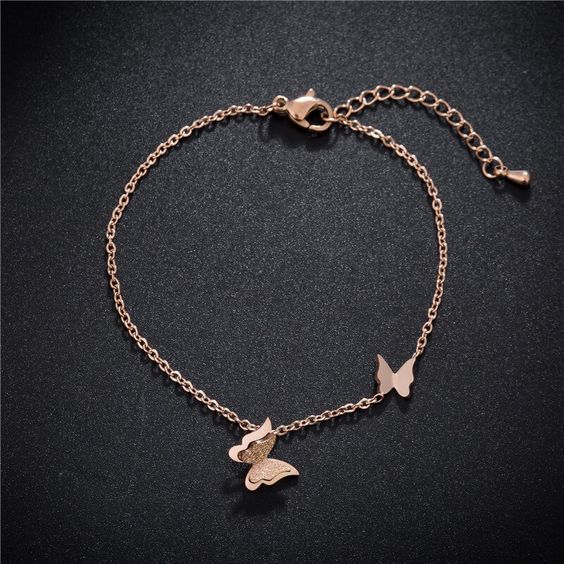Introduction:
In the realm of jewelry, there exists a piece that carries with it a subtle allure, reminiscent of ancient traditions yet effortlessly blending with modern fashion. Anklets, those delicate ornaments adorning the ankles, have held a significant place in various cultures throughout history. From their origins in ancient civilizations to their current status as trendy accessories, anklets have endured the test of time, evolving in style while retaining their symbolic significance.
Ancient Origins:
The history of anklets dates back thousands of years, with evidence of their existence found in various archaeological discoveries. In ancient Egypt, anklets were worn by both men and women as symbols of wealth and status. They were crafted from precious metals such as gold and adorned with intricate designs and gemstones. Egyptians believed that wearing anklets brought protection and good fortune, leading to their widespread popularity among the elite.
Similarly, in ancient India, anklets, known as “payal” or “pajeb,” were an integral part of a woman’s attire. Made from silver or gold, these anklets were embellished with bells that produced a melodious sound with each step, signifying femininity and grace. They were not merely accessories but held cultural and religious significance, often worn during festive occasions and ceremonies.
Symbolism and Cultural Significance:
Across different cultures, anklets have symbolized various themes ranging from femininity and sensuality to spirituality and protection. In Indian culture, anklets are associated with marriage and are an essential part of a bride’s adornment, symbolizing prosperity and fertility. They are also believed to have therapeutic benefits, with some traditional medicine practices advocating the wearing of anklets to stimulate specific pressure points.
In some African cultures, anklets are worn as symbols of tribal identity and social status. They are adorned with beads, shells, or other natural materials, reflecting the wearer’s connection to their heritage and community. In Western societies, anklets have often been associated with freedom and rebellion, especially during the 20th century when they became popular among bohemian and hippie communities.
Contemporary Fashion:
In recent years, anklets have experienced a resurgence in popularity, becoming a staple accessory for fashion enthusiasts worldwide. Modern anklets come in a variety of styles, from minimalist chains to elaborate designs adorned with charms and embellishments. They are versatile accessories that can be worn with casual attire for a laid-back vibe or paired with elegant ensembles for a touch of sophistication.
Celebrities and influencers have played a significant role in popularizing anklets, often showcasing them on red carpets and social media platforms. Their endorsement has propelled anklets back into the spotlight, inspiring fashion enthusiasts to experiment with different styles and incorporate them into their personal aesthetic.
Embracing Tradition in a Contemporary World:
Despite their evolution over time, anklets continue to carry with them a sense of tradition and nostalgia. For many, wearing an anklet is not just about following a trend but connecting with centuries-old customs and rituals. Whether worn as a subtle accent or a statement piece, anklets serve as a reminder of the rich tapestry of cultures from which they originated.
In a world where fashion trends come and go, anklets stand as timeless accessories that transcend the boundaries of time and culture. They are more than just ornaments for the ankles; they are symbols of heritage, identity, and personal expression. As we continue to embrace diversity and celebrate individuality, let us not forget the humble anklet, a delicate adornment with deep roots and enduring charm.

